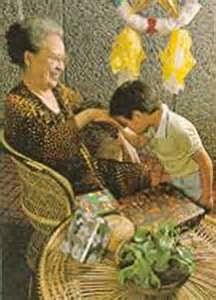The Tragedy in the Philippine National Anthem
The Philippine national anthem was originally composed as an incidental music for the proclamation of the first Philippine Independence from Spain in 1898. Subsequently, in 1899 a poem written in Spanish called “Filipinas” was incorporated as its lyrics. During the first half of the American colonial occupation, it was banned from being played until the appertaining colonial law was rescinded in 1919. On that same year it was translated into English by an American subject named Mary Lane together with Camilo Osias. In 1956, after some minor revisions under the administration of then President Ramon Magsaysay, it was since officially adapted and titled “Lupang Hinirang” or “Chosen Land”.
The Philippine National anthem is an acclamation of the Philippine’s innate beauty. Painted in its lyrics and melody are the patriots passion and their pledge of loyalty. It is filled with inner delight and a promise to choose damnation when wronged. Here in the latter is where the tragedy starts. Let me invite you to the last two phrases of the anthem in Tagalog;
Aming ligaya, na pag may mang-aapi,
Ang mamatay ng dahil sa yo
Its literal English translation is;
Ang mamatay ng dahil sa yo
Its literal English translation is;
When wronged, it is to our gladness,
To offer our life for you.
Its English translation by Mary Lane, et al;
For it is glory ever when thou art wronged,
For us thy sons to suffer and die.



Note ... that the above last two phrases is the culminating part of the anthem that commits oneself to accept his final destiny … and his only destiny if and when he decide to assert himself against the colonizers. It may also be noted that the translation made by Ms. Lane included the words “to suffer” which was neither suggested in the original lyrics nor was an essential part of the original Tagalog version. During the American colonization from 1901 to 1946 the anthem was sung and played in English for over 40 years, over and over to the ears of every adult and growing young Filipinos suggesting the threat of perilous end to those who will resist the colonizers. Those words, to suffer ... to die… to suffer and die ... to suffer and die were embedded in the Filipino minds.
After the formal American colonial rule, the rendition of the Philippine National Anthem was mandated to be in “Tagalog”, and no longer with the words “to suffer” and hence, remaining is the notion that the destiny of those who will oppose a foreign power is death ("ang mamatay ng dahil sa yo") and that death by itself can only be the ultimate victory for the Filipinos. The Filipinos was a subdued race. It has been colonized and invaded by three countries from 1521 to1946. Centuries after centuries, its identity as a nation is still in morphosis, resultant to the wedge driven in between the fibers of common sentiments that could have united the Filipinos as one nation. Wedges that are in the alien songs, print and graphic media, movies, videos, literature, advertisements, language and educational aids among others that were accumulated and absorbed to confusion in the Filipino minds over years of colonization and beyond through direct social suggestion and subliminal messaging.
At this point, one may wonder if the latter is possible. Recent interest has shown that it is probable that subliminal messaging can affect a person’s perception, behavior, reaction, decisions and values in a particular situation. Advertisers for example has put up considerable effort to influence consumer decisions by discreetly associating products to human urges and desire via subliminal messaging. An example may be found in the following link;
If subliminal messaging is probable, direct social suggestion is possible. Just like in the litany of prayers, phrases of adoration are muttered over and over to inculcate belief and surrender. Similarly, intentional or not, the exemplification of direct social suggestion in the Philippine National anthem may have played a role in the Filipino attitude. The last phrase of the Philippine National Anthem though at a glance and vocalization may look and sound patriotic, it may actually be persistently embedding a sense of defeatism in the subconscious that by nature is instinctively bias to personal survival. It may have instilled and institutionalized in the mind the negative consequence of resistance. It may actually in its creeping subtlety has finally taken away the will to resist oppression of any kind and instead had bred that ever-yielding attitude. Defeatism and surrender may have bred passivity, callousness and indifference. Attitudes that are evident among Filipinos of today. Attitudes that has turned into a habit from which the Filipinos needs to break away. It has to start with the basic, by revisiting and revising that last phrase of the Philippine National anthem, to wit;
“Ang mamatay ng dahil sa yo”
(To offer our life for you)
To;
“ Ang mamaya...ni para sa yo”
(To prevail for you)
To prevail or " mamayani" is a positive affirmation of a commitment that can breed greater positive values in the sub-conscious that can reshape the Filipino way of thinking. Yes, it’s a minute step to break an old habit, but the burden of introducing change towards the betterment in attitude and perception of the future Filipinos rest in the shoulder of this generation, in every way it can. The Filipino consciousness must be drawn away from defeatism towards a greater and nobler purpose. To aim for perfection; to pursue victory; to prevail against all odds. Let alone failure, suffering and death be the mere unintended consequence while in the pursuit of higher ideals, and never should it be the ultimate goal and glory. It needs redirection and it has to start somewhere.


Comments
Post a Comment